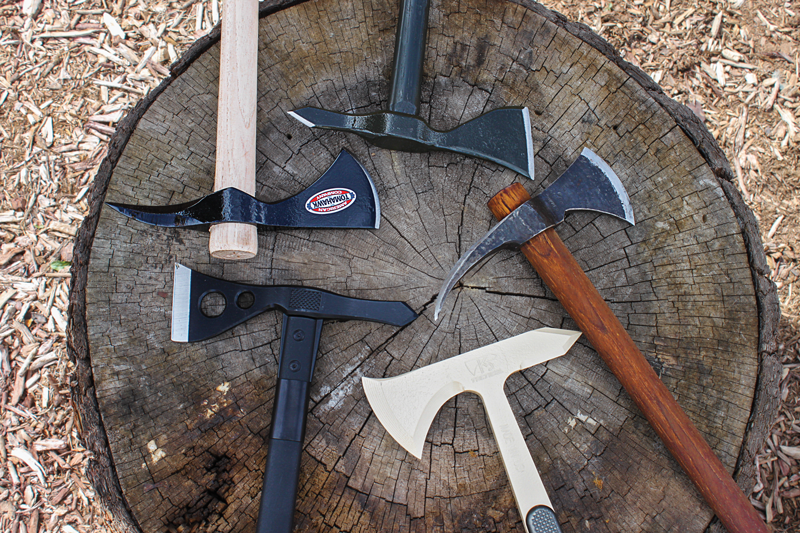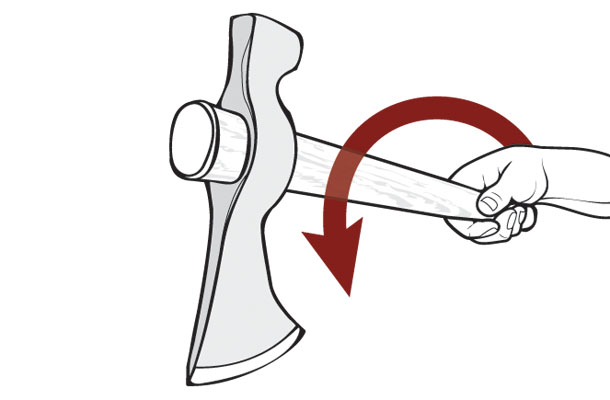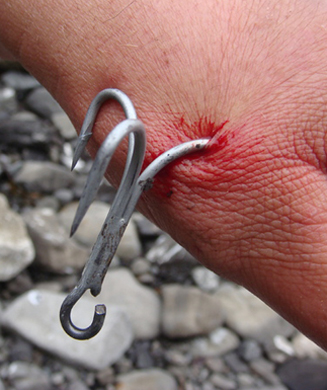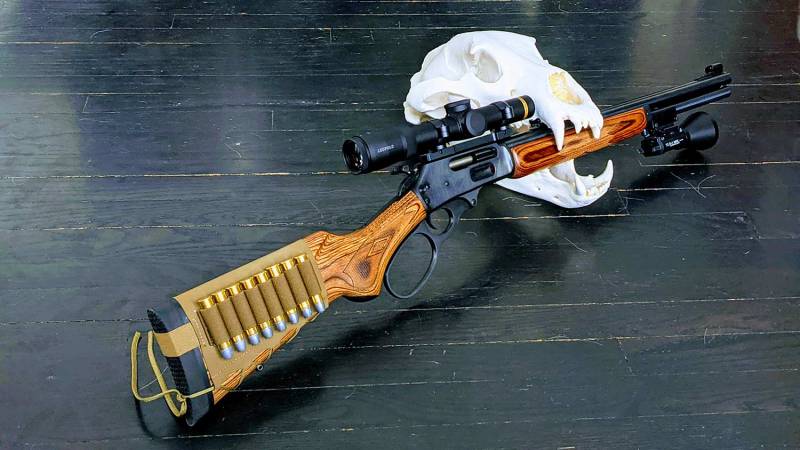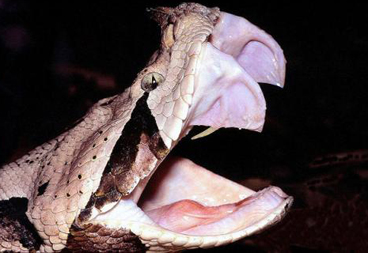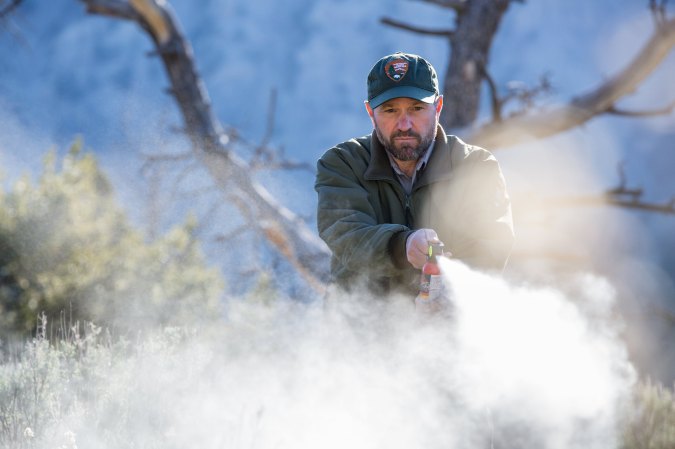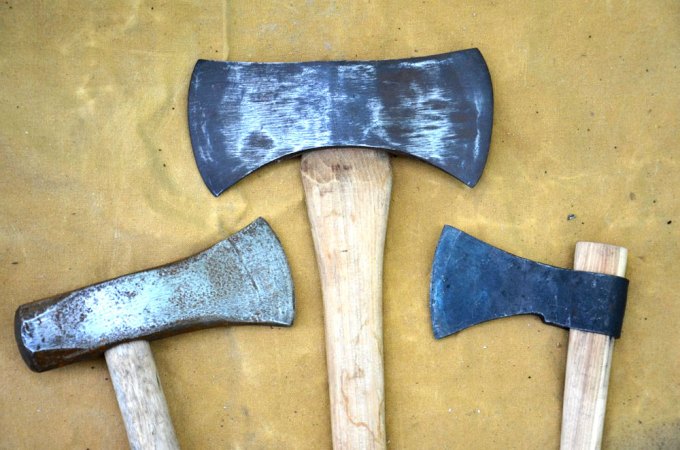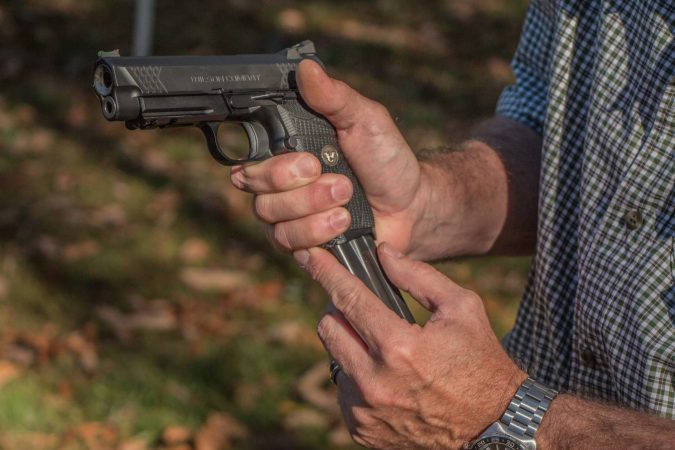We may earn revenue from the products available on this page and participate in affiliate programs. Learn More ›
Spiked tomahawks are among the most popular for self-defense. Depending on how they are constructed, the cost can range from $40 for a basic model to more than $400 for a custom-made ’hawk. Photo by the author.
Though swords, spears, and battleaxes have generally gone the way of the dodo bird, tomahawks remain useful and thrive in combat, self-defense, and bushcraft. They continue to be used in these situations because we have a natural ability to swing ’hawk-like tools and accurately hit things. Need proof? Hand a toddler a hammer and watch the destruction ensue.
Can’t get your head around using a tomahawk for personal protection? Self-defense is not just protecting yourself from another human—you could be fending off a wild animal when you’re camping or stopping an aggressive dog while walking in your neighborhood.
Tomahawks are a great choice for those who cannot afford, or do not feel comfortable with, a handgun, or who reside in an area that is not gun-friendly. Live in an apartment or condominium and feel a little wary of using a firearm within the thin walls? Are you living in a dormitory room on campus? Not yet of age to own a handgun? All these are prime scenarios for a tomahawk to come into play.
We know that almost 94 percent of self-defense encounters take place within 5 feet. Tomahawks are specifically a close-quarters fighting tool. And when wielded by someone with even minimal experience, a ’hawk is a formidable weapon.
What to Look For
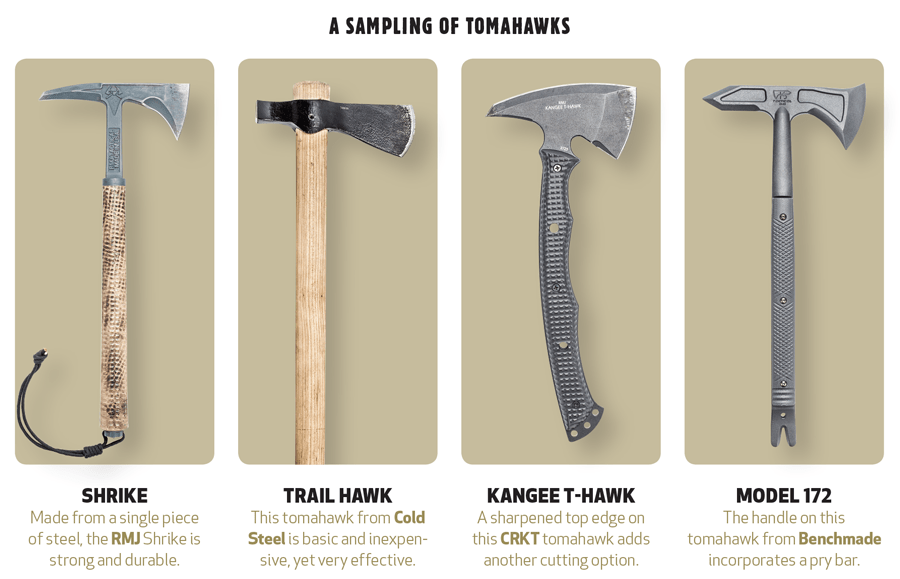
Weight: When looking to purchase a tomahawk for self-defense purposes, I suggest finding one in the 16- to 23-ounce range. ‘Hawks heavier than this are known for their breaching capabilities, but because of their excess weight, they should not be your first choice for self-defense.
Edge: Most tomahawks come with a utility edge that, while useful for all-around chores, is not up to snuff for self-defense. Either purchase a tomahawk that comes with a main edge sharp enough to shave the hair on your arm, or spend a few minutes with a whetstone tuning the edge to bring it up to par.
Handle Material: Tomahawks come with one of three handle styles: wood, integral, or hybrid. Wood-handled ‘hawks are traditional and inexpensive, and they concentrate more of the weight of the tomahawk in the head. Wood handles are also easy to replace should you manage to break one. Integral tomahawks, in which the handle and head are constructed from the same piece of metal, are more expensive. These are stronger and place less of the weight of the ‘hawk in the head, which affects the tomahawk’s balance and feel. The third style, which I call hybrid ‘hawks, have a handle made of a material other than wood but still separate from the head. Non-wood handles, which are unaffected by temperature and humidity, are lightweight and easy to maintain, though sourcing a replacement handle can be difficult. In the case of both wood-handled and hybrid ‘hawks, I suggest having a spare handle around in case the original breaks.
Handle Length: A tomahawk’s handle length ranges from 12 to 22 inches. When deciding on handle length, take your strength and stature into account. A good way to determine the best length for your body size is to lay the tomahawk head in your open palm with the handle along your forearm; the handle should end at or near your elbow. If you want to experiment with length, a 19- to 22-inch wood-handled ‘hawk is a great place to start. The long handle allows you to cut off little sections until you get to a length that suits your needs.
’Hawks with short 12- to 14-inch lengths are especially suited for concealed carry. Many people use these short ’hawks because they believe the shorter length would benefit them in a close-combat situation. I have found that with the snap-cut style of swing (see below), a longer ’hawk is surprisingly maneuverable and heavier hitting than a shorter ’hawk, even in tight quarters. Tomahawks with 15- to 18-inch handles are very versatile. I prefer to use 15-inch ’hawks, as I find this length swings just right for me. If I choke all the way up to the head, the handle is long enough to act as a guard along my forearm for blocking and can be employed for striking as well.
Head Styles: Tomahawk heads come in an almost unlimited number of styles, but the three most popular are spike, polled, and un-polled. The poll is the part of the ‘hawk that projects from the back of the head, opposite the main blade.
Heads with no poll are generally the lightest, which make them easy to manipulate. Personally, I find that poll-less ’hawks do not fit my hand as well as those with polls when gripping the head for detailed cutting. The low weight of these ’hawks comes at a price, as the lack of poll weight can cause the head to deflect upon impact, twisting the ’hawk in the user’s hand.
Polled ’hawks are generally considered multi-use tools, but they are well suited for self-defense. The added mass of the poll balances the ’hawk, allowing for good follow-through on targets and minimizing the chances of deflection or twisting. The poll acts as a blunt striking face, too, and provides support when you grip the head of the ’hawk for forearm blocking maneuvers.
Tomahawks with spike-style polls have become top sellers for self-defense. Having both a deep penetrating spike and the wide cutting face on the main blade makes a spiked ‘hawk an excellent close protection tool. Some users have concerns about the spike because a sharp edge is always directed back at them. This is valid, and should you choose a spike-polled model, it is important to practice enough so that you’re comfortable with it.
Snap-Cut
When I was in elementary school, a Marine who fought in the Pacific Theatre during WWII, Walter, lived down the street from us. After the war, he worked in construction. I spent hours with him gleaning skills and listening to his stories. The most useful skill he taught me was how to properly hold and swing a hammer—he called it a “snap-cut.” It works perfectly for swinging a ‘hawk as well.
With a good snap-cut, you relax the muscles in your arm and lighten your grip. This reduces fatigue and makes the head of the ’hawk travel faster and hit its target with greater power, control, and efficiency.
To perform a snap-cut, grip the ’hawk as you would a hammer. As you raise your arm, bending your wrist and forearm toward your shoulder, open your middle, ring, and pinkie fingers. Keep your index finger and thumb firmly closed around the handle. This allows the handle to pivot at your thumb and index finger.
While swinging the ’hawk toward the target, quickly close your fingers right before it hits. This gives the head extra snap (hence the name), increasing the force of the strike. It also creates a compact swing and gives devastating power on target without opening your body up to an attacker. The snap-cut takes a minimal amount of practice to get it right.
Training
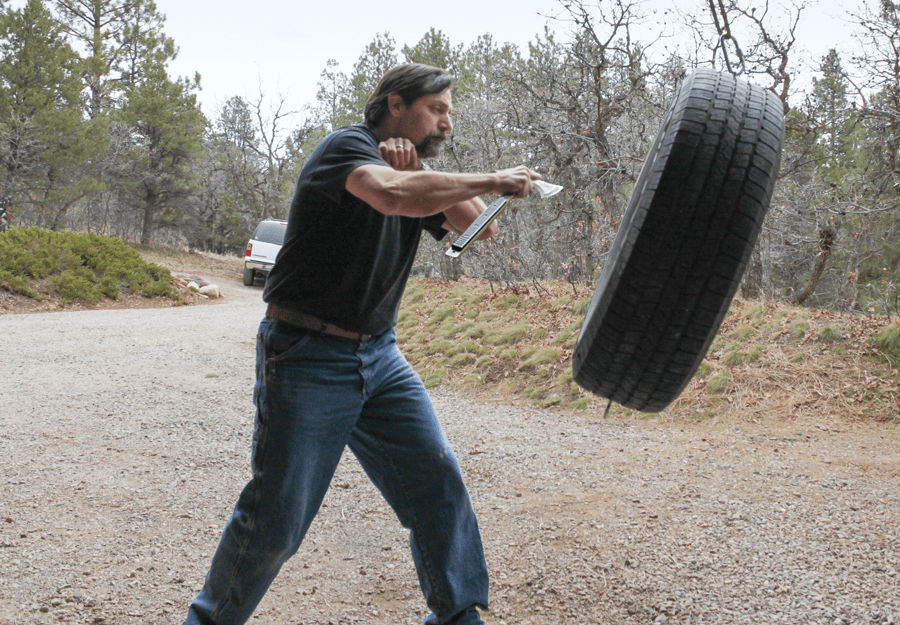
It is said that “perfect practice makes perfect.” If you plan to employ a tomahawk for self-defense, practice with it, and get comfortable with how it feels. There is no better way to practice and improve than by actually striking a target. I use a discarded car tire to which I have added eyebolts, both top and bottom. I can hang it using just the top bolt, which allows it to swing more and forces me to chase it down, switch up grip and striking methods, and physically respond to the randomly swinging target. Using the lower eyebolt to anchor the tire to the ground still allows for some movement of the tire, but I can concentrate on one type of strike. This inexpensive and easy to build, multi-capability target makes for a very realistic practice setup as well as a decent cardio workout.
Don’t neglect your off-hand or weak side. Make sure you spend some time working on your swing with both hands. Once you are comfortable using the ’hawk in either hand, feel free to add a fixed-blade knife to whichever hand isn’t working the tomahawk.
I think an excellent opposite-hand companion to a ’hawk is a stout 5-inch fixed-blade knife. If you choose to use a short-handled tomahawk as a concealment tool, a large folder would pair excellently.
People have been using steel-headed tomahawks to defend themselves for hundreds of years. Though tomahawk styles and construction have changed over time, the tomahawk’s capabilities as a life-saving and formidable defensive tool have not.
